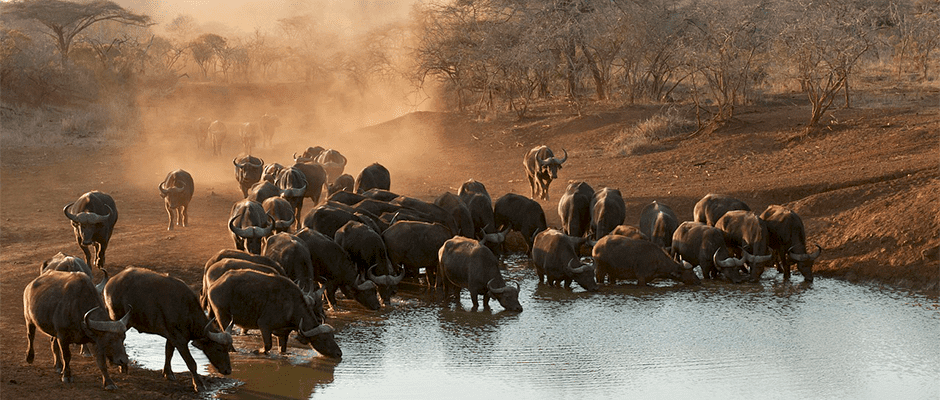Share this article
Wildlife disease could spread faster in dry places
When people get sick, they tend to retreat to their beds, opting for rest and recovery instead of infecting others.
It’s been widely believed that sick wild animals also isolate themselves and minimize disease transmission, but new research suggests that those in arid areas and other habitats with scant resources might pass pathogens around by spending more time than expected close to healthy individuals.
“If you think of dry environments, a lot of animals aggregate at small waterholes,” said Mathias Franz, first author on the study published in Functional Ecology. “That could affect contact patterns and how sickness might affect these contact patterns.”
In 2017, Franz, a postdoctoral researcher at the Leibniz Institute for Zoo and Wildlife Research in Germany, and his colleagues modeled the movement of infected solitary vertebrates on dry landscapes based on various assumptions about their behavior. Their model applies to species such as the African buffalo (Syncerus caffer), which carry serious illnesses like foot and mouth disease and bovine tuberculosis and rely heavily on the limited water in the savannah.
“The stronger the water dependency of the animals, the stronger the increase in disease spread due to sickness behavior,” Franz said. “What we think of as easy, predictable outcomes of sickness behavior and disease spread might in some cases get the opposite outcomes.”
Past work has demonstrated that social interactions can raise the frequency of contact and transmission in sick birds and other wildlife, he said.
“Beyond this social context, spatial constraints might have similar effects, so you open up a broader view where we might expect the counterintuitive effects of sickness behavior and further effects on disease spread,” Franz said.
Wildlife diseases might also travel swiftly in places where other resources are sporadic or hard to come by, he said, such as winter forage for big herbivores. Animals could make contact and disease transmission more likely by gathering at the few spots that contain these scarce necessities.
Header Image: Buffalo gather at a watering hole in a South African savannah. ©Buffalo, South Africa, Savannah








